On this page:
About large development sites
Large parcels of land within cities and towns sometimes become available for development and new uses.
Often in prime locations, these sites can be:
- publicly owned, such as railway corridors, surplus government land or dockyards
- former commercial, industrial, or institutional sites that are no longer needed for their original purpose.
The sites may be located in activity centres or are accessible to transport connections, services, and jobs.
Large development sites need to integrate with the existing urban structure of a city or neighbourhood. This often involves creating new:
- residential or commercial areas
- movement networks
- infrastructure
- public spaces
- community facilities
Why is it important?
Large development sites that become available contribute to the growth and evolution of cities and towns. How a parcel of redeveloped land is connected to the surrounding area and divided into blocks, lots and streets will influence the area's accessibility and potential future use patterns.
Large development sites can provide an opportunity to repair and enhance the existing urban infrastructure in the area. There may be too few dwellings to sustain local business activity, insufficient public space, or recreation opportunities. The development of the site may also enable new connections between adjacent established areas.
Objective 1.3.1: integrate a large development site into its surrounding area.
- Connect the development site’s movement network to the movement network of the surrounding area.
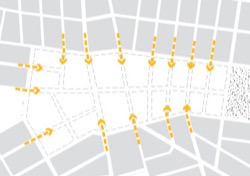
Tip: The movement network includes pedestrian and bicycle paths, public transport services, streets and roads. - Create new links across the development site to connect the new neighbourhood with the surrounding area.
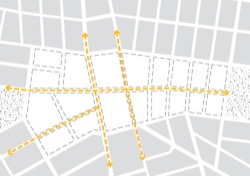
- Provide at least two ‘through’ streets across a new neighbourhood in a development site, linking ‘centre to edge’. Very large development sites may require additional through routes.
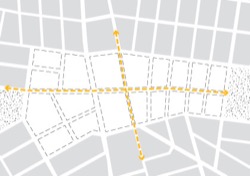
Objective 1.3.2: ensure large development site structure provides a high level of amenity and functionality for residents.
- Where possible, include uses and facilities in the development site that are lacking or insufficient in the surrounding neighbourhood.
- Locate higher intensity activities on well-connected streets within a development site.
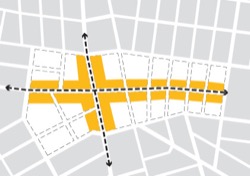
Tip: higher intensity activity examples are shops, community services, cafes and cinemas. - Where the street block perimeter is greater than 600 metres, create cross-block pedestrian links.
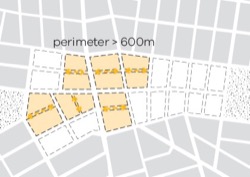
Tip: Studies of pedestrian behaviour suggest street block perimeters greater than 600m are more likely to discourage walking. Creating pedestrian permeability across a block encourages walking. - Provide the size and types of public open spaces for informal and active recreation to serve the intensity and type of development.
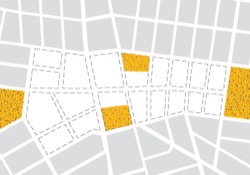
Tip: Higher densities of residents or workers in an area require access to a higher quantity and diversity of public open spaces.
Objective 1.3.3: ensure large development sites maintain the amenity of adjacent residential uses.
- Create a transition from large development sites to adjacent residential neighbourhoods using scale, built form and uses

Tip: a transition can be achieved through the arrangement and size of new blocks and lots at the development site edge and the future built form, location of activities and street design.
Objective 1.3.4: ensure the public realm of large development sites is well-maintained and managed.
- Develop public open spaces, civil infrastructure and streets to a standard acceptable for ongoing maintenance and management.
Tip: the local council standards and materials should be met for adoption and for ongoing management of the public realm within large development sites.
Page last updated: 19/06/23